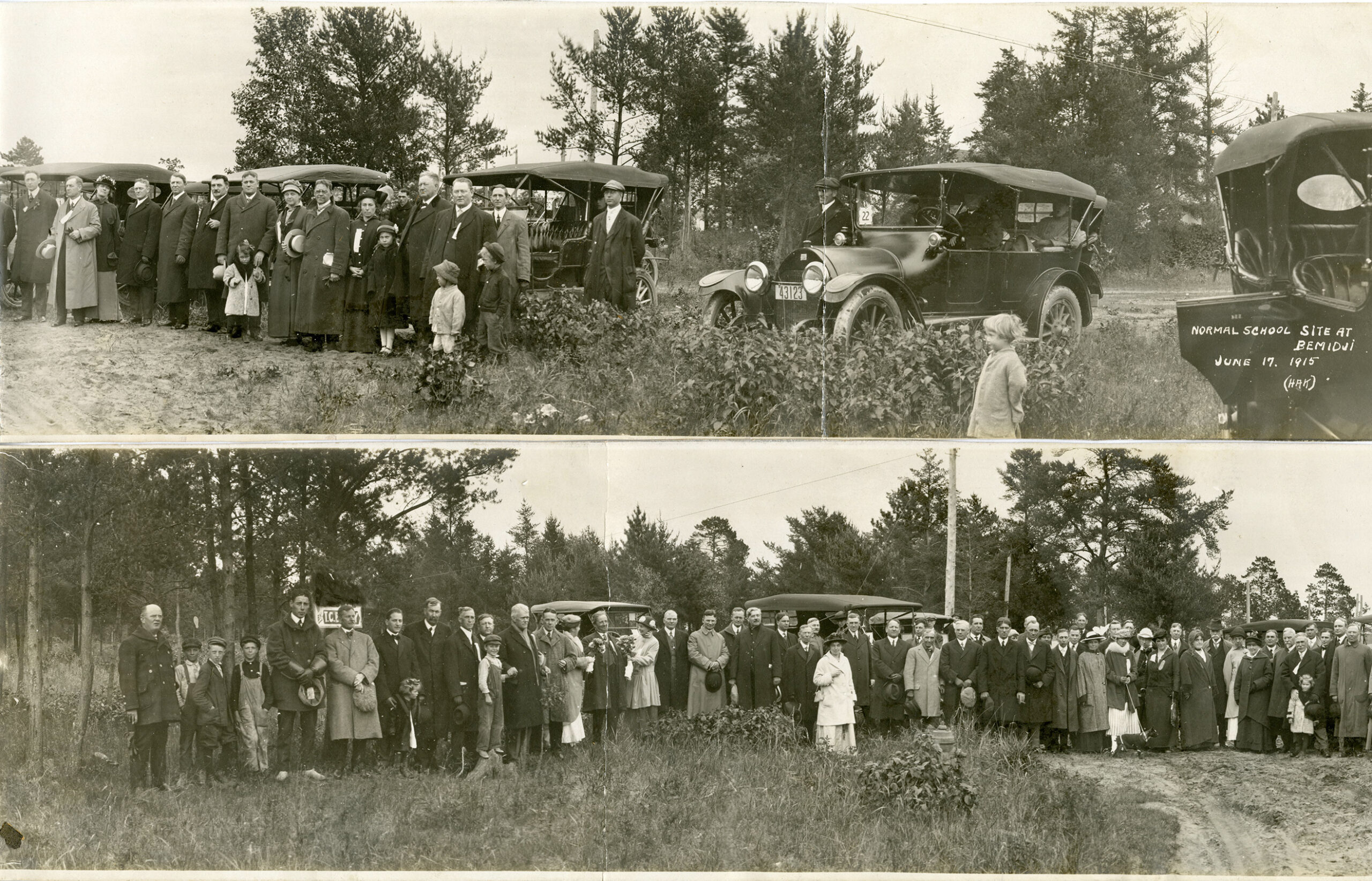
By The Bemidji Pioneer
Published 5:01 a.m. on May 5, 2019
When news broke in Bemidji that the city had been selected as the location for Minnesota's sixth normal (teacher training) school, a great celebration erupted. The Bemidji Pioneer reported on July 17, 1913, "BEMIDJI IS JOYFUL OVER NORMAL NEWS: CELEBRATION LASTS UNTIL 9:00 THIS MORNING."
Automobiles crowded with people formed a spontaneous parade; participants rang bells, pounded on pans and tooted horns. The Bemidji Band marched and played. A.P. Ritchie, Bemidji's superintendent of schools, who had promoted the city for the site since 1907, was hoisted upon shoulders and cheered. Fellow committee members J.J. Opsahl and F.S. Arnold were heartily toasted for their parts in lobbying for Bemidji and securing the site.
The campaign to bring a normal school to Bemidji had been a long one, and much work needed to be done before the school could open its doors to train teachers.
Normal School refers to a two-year teacher training institution for high school graduates that focused on teaching norms of curriculum and pedagogy. In 1921, the normal schools became four-year State Teachers Colleges.
Between 1860 and 1902, the first five normal schools had opened in Winona (1860), Mankato (1868), St. Cloud (1869), Moorhead (1888) and Duluth (1902). Enrollment in all five normals was approaching 2,200, and settlers in northern Minnesota needed teachers.
Villages sprung up and townships were established in Beltrami County, each setting up their own school. Teachers who trained in the normal schools weren't moving north to teach. By 1907, county superintendents all across northern Minnesota, including Beltrami County Superintendent W.B. Stewart, were advocating for a normal school in north-central Minnesota. In an article in The Bemidji Pioneer, Ritchie promoted Bemidji as the site; Stewart agreed and enumerated the financial benefits for Bemidji. State Rep. J.J. Opsahl prepared a bill to promote Bemidji in the Legislature.
Back-and-forth
Cass Lake Times editor Frank Ives touted Cass Lake as the best site. State Sen. Daniel M. Gunn introduced a bill for a new normal school there. Over the next several months, there was a lot of smear-talking between Bemidji and Cass Lake, each vying for the school. Other towns in the region were more concerned about getting a normal in the area and less concerned about exactly where. A general bill proposed a normal school for the area with no specific location, but in 1907, none of the bills passed.
The topic died down temporarily but resurfaced a year later. The State Normal Board acknowledged crowding in the five existing normals but saw no need for a sixth school. Nevertheless, new bills were introduced; and in March of 1909, a bill passed to build a sixth normal in Cass Lake, but Gov. John A. Johnson vetoed the bill, citing "no pressing need for the establishment of an additional normal school at this time." He indicated that the financial situation in the state was not conducive to constructing new public buildings. Also, he said, the Cass Lake site had never had the approval of normal school authorities.
Once again, the issue died down until 1911. In the summer of 1912, Thief River Falls jumped into the mix, vying for the school. Other towns entertained the idea: Warren, Grand Rapids, Park Rapids, Bagley, Ada, Clearbrook. In 1913, bills were introduced for a sixth normal at Bemidji, Cass Lake, Thief River Falls, or a general site in northern Minnesota. The top contenders in this go-round were Bemidji and Thief River Falls. Earlier, the main supporter in Cass Lake had been Peter Larson, the local school superintendent, but he was no longer there.
Bemidji and Thief River Falls had many similarities on paper: good basic infrastructures – water, gas, electricity; well-connected rail systems, new Carnegie libraries, comparable county populations – although Beltrami was much larger geographically; each touted banks, mills, and several churches. Each had two newspapers. Bemidji had a reputation as a somewhat rough lumber town; Thief River Falls had more agriculture. Bemidji boasted its clean air and lake.
On April 19, 1913, the bill for a new normal in north central Minnesota passed – site to be determined. Competition grew between Bemidji and TRF. Thief River was fairly confident, but scrambled to figure out possible locations. Bemidji had already selected an ideal lake shore campus site. When the Normal School Commission visited Bemidji on July 8, they were toured and dined at a banquet at the Markham Hotel and presented with plans and arguments. Attorney E.E. McDonald declared, "There is not a more moral or law-abiding city of its size in the state." When asked about the number of saloons in town, McDonald gave the number 29, possibly an under-estimate, but he countered with nine churches.
The commission finally selected Bemidji on a vote of 4-1-the dissenting vote for Thief River Falls. Bemidji was ecstatic, but construction was slow to start. Legislative hang-ups and partial fundings slowed things down. As the U.S. grew closer to involvement in World War I, purse strings at the capitol were tight. Just $25,000 was appropriated in 1915, and finally another $75,000 in 1917.
By May of 1919, the first building was near completion, and the first Bemidji Normal School president, Manfred W. Deputy – for whom that building is named now at Bemidji State University – announced the opening of a six-week summer session to begin in June.
Written by Sue Bruns / Special to the Bemidji Pioneer




